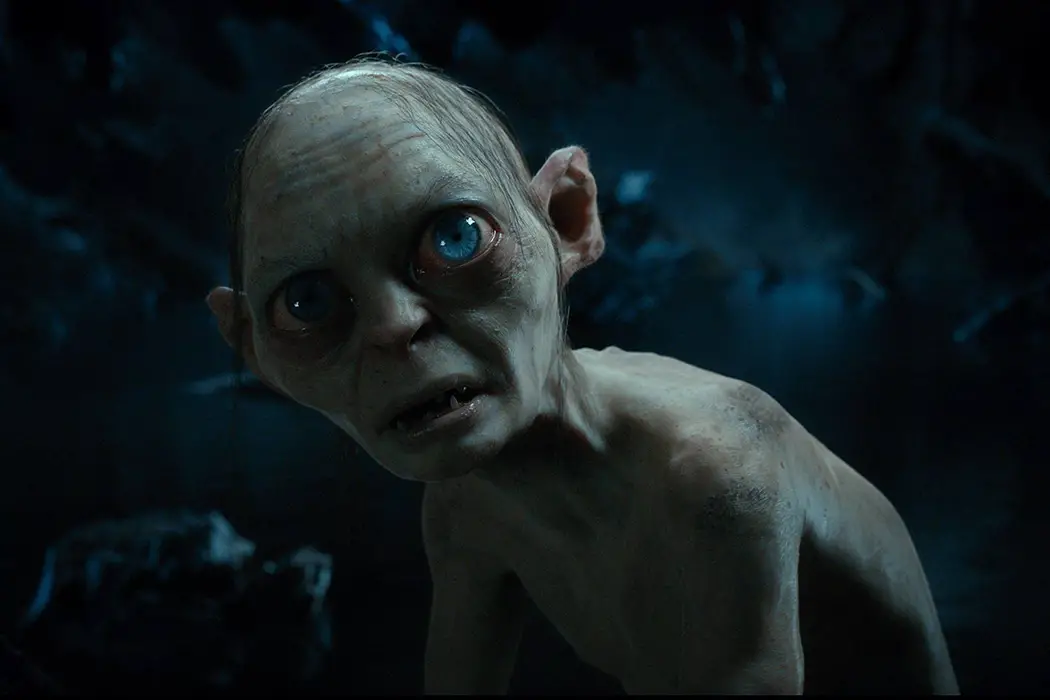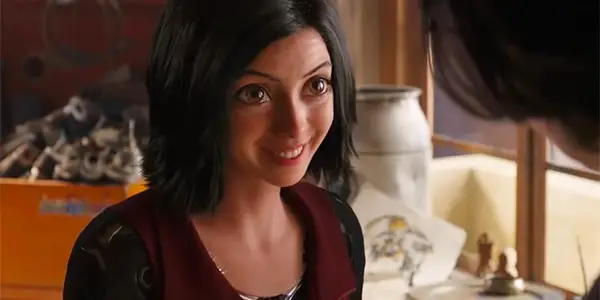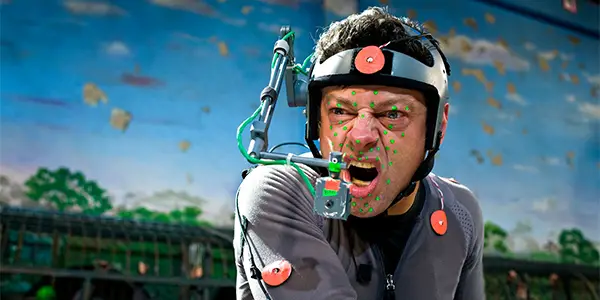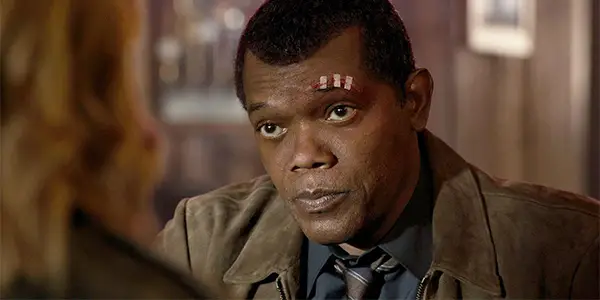How Motion Capture Technology Is Changing Storytelling Expectations

Jonathan Coffman is a writer and editor from Lexington, KY.…
The first official trailer for Alita: Battle Angel was met with little fanfare. While the biggest fans of Yukito Kishiro’s 1990’s manga series may have waited with anticipation, general film buffs were unphased. It wasn’t until the cyberpunk epic’s trailer was presented in front of bigger releases that casual viewers took notice, largely writing it off as a James Cameron vanity project. But after a warm critical reception and $385 million worldwide box office, it is clear that Alita is more than a success. It is a milestone for motion capture technology and the future of storytelling on film.
Alita: Battle Angel centers on a cyborg girl, portrayed by Rosa Salazar, who wakes up dismembered in a 23rd century metropolis junkyard unfamiliar with her new surroundings. She is taken under the wing of scientist Dr. Dyson Ido (Christoph Waltz), who rescues her from the ruins on the fringe of the city, providing her with an advanced new body and naming her after his own late daughter Alita.
The film unfolds in traditional but fun ways. However, it would largely fall flat without its significant attention to detail toward motion capture performances. From James Cameron’s early blockbusters in Aliens and T2: Judgment Day to 2009’s record breaking Avatar and this latest film as a writer and producer, he has dedicated his career to pushing the limits of cinema’s size and scope. As many Cameron productions go, Alita: Battle Angel would not be possible, or at least worthwhile, without the necessary technology.

Kishiro’s graphic novel is set in a grounded reality by science fiction standards. His metropolis is characterized best by its skyscrapers and seedy underbelly of criminals and looters. While the scenery is engaging, the movie’s technical achievements shine brightest in character detail. Alita herself is fully animated from head to toe, with huge bug eyes that separate her from her human counterparts. There are many close-ups that offer intimacy normally reserved for a performer’s true face, but Alita’s pores are never questionable as the camera slowly gazes over her expressions. Salazar has made notable appearances in understated TV and film projects, but her performance as Alita feels like her true breakout despite the walls of pixels between her and the viewers.
Salazar’s winning performance as Alita anchors the movie, and the surrounding cast of ancillary characters hold your attention on the world around her. All types of cyborgs and creatures of the night fill the bars and streets around Alita, some with arms replaced by knives, tentacles and everything in between. Few of these characters are relevant to the greater plot but each adds texture to an otherwise blank slate of a city, the typical future dystopia we’re trained to expect in science fiction. The actor portrayals often feature their real faces distorted in some fashion by their character’s own distinct qualities, making each feel unique without devoting significant screen time. Sometimes creating curiosity around a character’s backstory is more valuable than providing the answers.
Technicians Behind the Scenes
WETA Digital worked with Cameron to bring Alita: Battle Angel to life for over four years, not counting decades of development hell before beginning production. For nearly two decades the company has been at the forefront of motion capture technology, winning six Oscars for Peter Jackson’s Lord of the Rings trilogy and King Kong, Cameron’s Avatar, and Disney’s 2016 live-action adaptation of The Jungle Book. As the industry became enamored with the rapid development of visual effects, WETA Digital zeroed in on a specific niche: creating believable characters that cannot be realized by makeup prosthetics.
With Andy Serkis as Gollum in Jackson’s Lord of the Rings trilogy, WETA Digital introduced the notion that motion capture performances could feel real and stirring to public audiences. Serkis has since become the godfather of motion capture acting, going on to be a creative leader behind CGI-heavy films such as the Planet of the Apes reboot trilogy and his directorial debut Mowgli. Serkis’s rise on the shoulders of WETA Digital’s milestones paved a way for his own success and audience’s embrace of digital performances.

In Alita: Battle Angel, WETA Digital’s work is pushed to its limits. Placing a motion capture performance at the heart of a film based on an IP with a specialized audience and a $170 million budget is a fool’s errand on paper. Matching it with a star willing to take on the physical toll of such a performance, unbothered by their spandex onesie and green dots across their face, who can still connect with scene partners despite it all, is quite a tall order. But in 2019, the limitations are dwindling and it comes down to finding the Rosa Salazars of the world. These performances will permeate shades of genre film for years to come, and if they continue to capture the spirit of these characters this way, maybe that isn’t a bad thing.
Revisiting Familiar Faces
Naturally, once new ground is broken everyone looks ahead to the next big challenge. Motion capture performances have been mainstream for the better part of the past 20 years, but it wasn’t until fairly recently that the technology started being used to de-age familiar stars.
The first notable use of de-aging came in 2008’s The Curious Case of Benjamin Button, a movie that demands to show its protagonist across a wide range of ages. Brad Pitt stars as the title character, and at one point the movie is tasked with showing Pitt in his early 30’s, an age where the audience is acutely aware of what he looked like at that point in his life. The scene is brief and understated, and only works to a certain degree. Some shots may look like video game cutscenes, but it was the first time we had seen such a thing and Hollywood took note.
This technology has travelled through peaks and valleys in the years since. In 2010, Kurt Russell reprised his role as Kevin Flynn for Tron: Legacy, a performance that, please forgive me, hasn’t aged particularly well. Motion capture may have been a staple in filmmaking by then, and de-aging had sufficed in its limited use, but Russell’s hefty role was too weighty for the tools to support at this point.
WETA Digital reentered the conversation by de-aging Orlando Bloom’s Legolas in The Hobbit prequels, while Disney’s Marvel and LucasFilm branches began regularly featuring impressive de-aging performances in Ant-Man, Captain America: Civil War, and an eerie cameo in Rogue One: A Star Wars Story, where Princess Leia is given the blueprint to the Death Star moments before we will meet her for the first time in A New Hope. Carrie Fisher passed away weeks after the film’s release, raising moral questions about using an actor’s likeness to reprise beloved characters.

Now, like Alita: Battle Angel a month earlier, Captain Marvel has offered the next step in this evolution. Samuel L. Jackson makes his ninth appearance as Nick Fury in the Marvel Cinematic Universe, this time to tell his origin story as he meets Carol Danvers in the 1990’s. Like Pitt and Russell before him, Jackson’s performance is challenged by his own mega celebrity status and public familiarity. Despite the need to thread the needle carefully, Jackson’s portrayal is nearly flawless. The de-aging feels completely natural and will almost certainly go unnoticed by the untrained eye. Every step of the way you feel that 90’s Samuel L. Jackson is back on set without any attempts to shy away from the viewer, and it is the most impressive example of such a performance to date.
What Comes Next
Of course, Hollywood is always aiming to top itself. Later this year, two massive films will again use de-aging technology and well-known celebrities as key storytelling tools. Will Smith will play an aging assassin and a clone of his younger self in Ang Lee’s Gemini Man, while Martin Scorsese will direct younger versions of Robert DeNiro, Al Pacino, Joe Pesci, and Harvey Keitel in Netflix’s The Irishman.
The farther the film industry insists on bending motion capture technology, the more reasonable it is to expect it to break. In the case of The Irishman, no man in that sentence is under 75 years old. Samuel L. Jackson may not be new to Hollywood either, but his is only one role in a film unquestionably anchored by its lead and team of visual effects veterans. The Irishman, on the other hand, is depending on its director and his buddies of forty years to relive their glory days. Netflix has surely cut a blank check to offer Scorsese any guidance he needs, but the reason to be skeptical is clear.
That said, audiences have long been skeptical and technology has always proven itself in due time. Whether Gemini Man and The Irishman are great successes is beside the point. De-aging film stars has officially been normalized. Sure, these films may not be the turning points that we point back to years later. But there’s no longer a question that motion capture performances can work for these purposes. The only question left is how long it will take to get right in massive doses.
What are your favorite motion capture performances? Will you be looking forward to Gemini Man and The Irishman in 2019?
Does content like this matter to you?
Become a Member and support film journalism. Unlock access to all of Film Inquiry`s great articles. Join a community of like-minded readers who are passionate about cinema - get access to our private members Network, give back to independent filmmakers, and more.
Jonathan Coffman is a writer and editor from Lexington, KY. He is a graduate of University of Kentucky's journalism program. His entertainment writing has appeared on Stranger Beers but we don't talk about that anymore.













